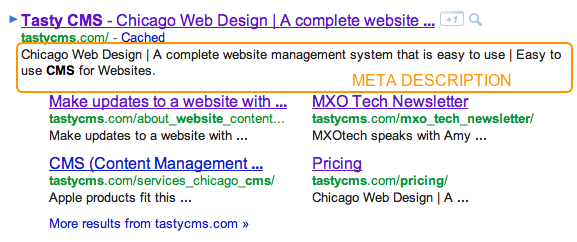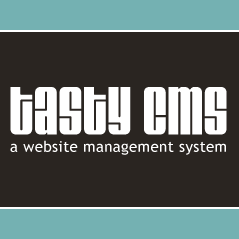A Quick intro to Meta Keywords, Meta Description and the Title Tag
Posted on Thursday, September 22, 2011 at 11:20 PM
When we talk about Search Engine Optimization (SEO) we're literally talking about hundreds of different little things that when looked at individually can seem insignificant. But as a whole they combine to hopefully increase your website's search ranking which should help with increased relevant traffic.
One post regarding everything having to do with SEO would be too much to read. Many websites, businesses and so called "SEO Experts" have created an entire industry around getting websites to rank higher. We'll focus on a few elements that every website have. Since all websites have these elements available to them this post should help a lot of people jump in without getting in over their head.
Meta Keywords
Let's get one thing out of the way right away. First, Meta Keywords are comma separated words that describe the context of a web page in short one or two word phrases.
Code Sample
<head>
<meta name="keywords" content="these, are the, keywords, that, describe, your, web page.">
</head>Secondly, they do nothing for SEO. Absolutely. Nothing. A couple of years ago Google came right out and announced that they do not use keywords when considering your website's ranking in search results. We wrote a blog post about this back in September 2009 entitled Better META: When Google speaks it's important to listen Just know that it's safe to ignore and move past Meta Keywords.
Meta Description
The Meta Description is similar to Meta Keywords in many ways. For one, it's an element that is added to the head tag. Second, the content should describe the information that is on an individual web page. And third, it does nothing for SEO.
Code Sample
<head>
<meta name="description" content="This is a short description of the web page. It should contain some key words and phrases that describe the content on the page.">
</head>But, unlike Meta Keywords, you do not want to ignore this element. According to SEOmoz, the Meta Description is a great place to write compelling ad copy.
The meta description tag serves the function of advertising copy, drawing readers to a website from the results and thus, is an extremely important part of search marketing. Crafting a readable, compelling description using important keywords can draw a much higher click-through rate of searchers to the given web page. To maximize click-through rates on search engine result pages, it's important to note that Google and other search engines bold keywords in the description when they match search queries.
Source: http://www.seomoz.org/learn-seo/meta-description
The Meta Description appears in search results when someone does a direct search on your business' name. For example, a search for "Tasty CMS" has a Google result of:

The context is the Meta Description for the home page.
Actual Meta Description
<head>
<meta name="description" content="Chicago Web Design | A complete website management system that is easy to use | Easy to use CMS for Websites">
</head>So, while the Meta Description in and of itself will not have a direct influence on your page's search engine ranking, if searchers find the content compelling enough it could increase click through rates. While it's a topic for another day, click through rates do have an impact on SEO.
Title Tag
By now you might be wondering if anything in your control impacts SEO. Unlike the Meta Keywords and Meta Description the Title Tag plays a very important role in SEO.
Code Sample
<head>
<title>Your Website - Example of a title for your webpage. It's filled with SEO goodness</title>
</head>According to SEOmoz, aside from the actual content on a webpage, the Title Tag is the single most important element on a page.
Creating a descriptive, keyword-laden title tag is important for increasing rankings in search engines. The screen shot below comes from SEOmoz's survey of 37 influential thought leaders in the SEO industry on the search engine ranking factors. In that survey, 35 of the 37 participants said that keyword usage in the title tag was the most important place to use keywords to achieve high rankings.
Source: http://www.seomoz.org/learn-seo/title-tag
Naturally, title tags show up in search results. When a user does a search for specific keywords that are in your title tag they will be bolded. This helps garner a greater visibility and a higher click-through rate.
Best Practices
At Tasty CMS, we developed a solution where the title tag is constructed from 3 separate pieces that our clients can control:
Page Title - Company Name - Meta Description
Generally speaking, a Page Title should contain relevant keywords since it accurately describes the content on a page. Additionally, we append the Meta Description at the end to provide even more context. Therefore, it makes a lot of sense to fill the Meta Description with SEO keywords and phrases. We recommend writing the Meta Description for the home page in more of a sentence-like format since it appears in results when someone does a search for your business; on other pages we recommend writing the Meta Description almost like you would write Meta Keywords by peppering in highly targeted keywords.
Actual Title Tag For This Page
<head>
<title>A Quick intro to Meta Keywords, Meta Description and the Title Tag - Tasty CMS - Helpful SEO tips to improve search engine ranking on Google and Bing</title>
</head>This is just the tip of the SEO iceberg but it should provide a simple explanation to some often asked questions that keep you in control.
« Previous PostWindows 8 Preview Next Post »Featured Project: Website Design & Development
